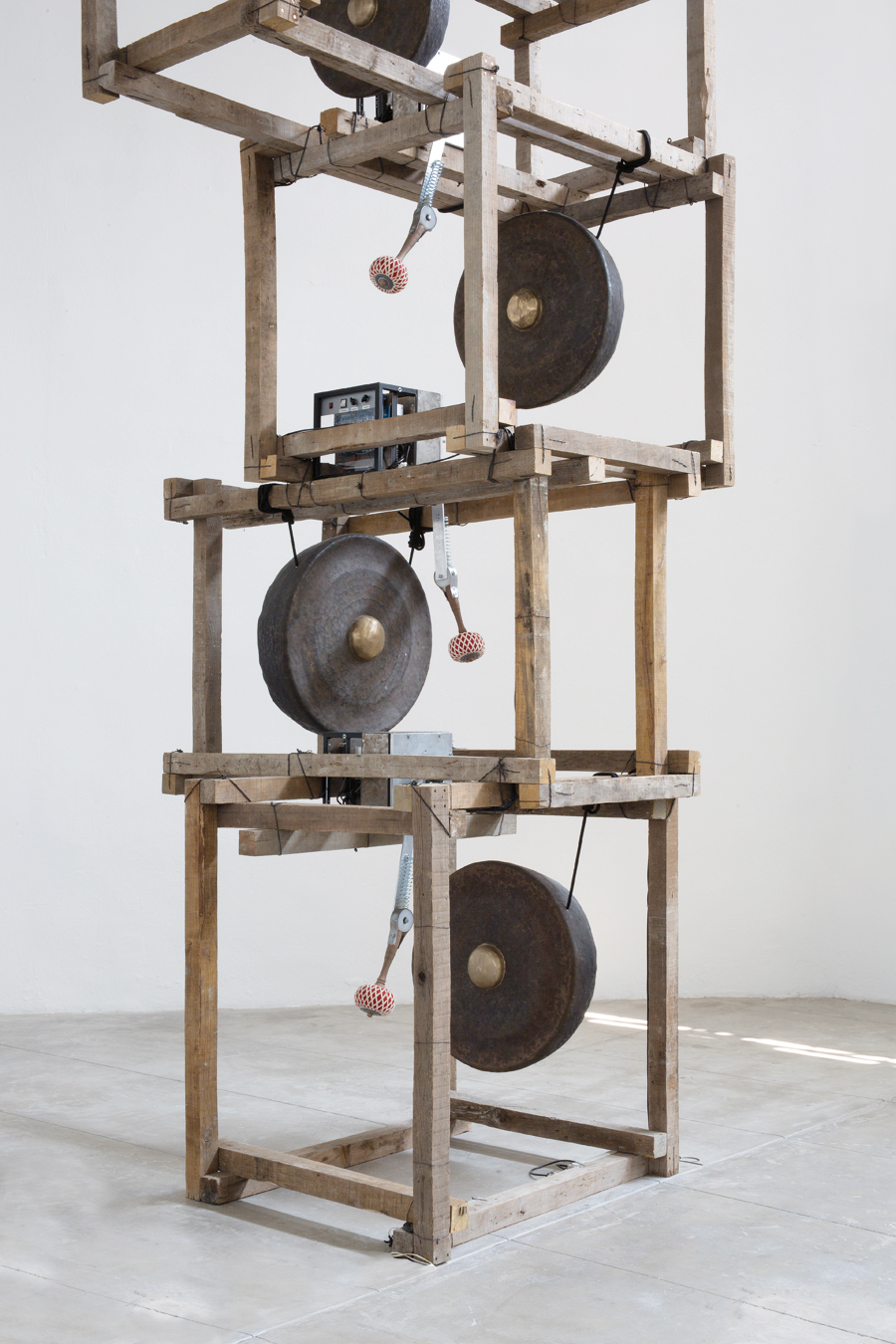Pedro Reyes
La Tallera, Cuernavaca, Mexico
La Tallera, Cuernavaca, Mexico

Pedro Reyes’s performances and large-scale installations question the authority of institutions, appropriating their structures in stage-like sets that often solicit public participation, sometimes through interactions with scripted performers. Reyes’s talent rests in his ability to adopt formal strategies from art history and popular culture – in particular, the pedagogical devices of 1990s relational aesthetics – and deliver them with a cartoonish twist. By acknowledging the role of the artist as activist – albeit one with a somewhat ambivalent attitude towards his or her politicization, who is frequently required to make concessions to the market – Reyes seeks to assert art’s ability to transform society.
Located in Cuernavaca, a popular weekend destination two hours south of Mexico City, La Tallera is an art centre housed in the former studio of iconic Mexican social-realist muralist David Alfaro Siqueiros. Reyes responds to this context by referencing the ludic experiments of 20th-century intellectuals who came to work in Cuernavaca, such as Siqueiros or the Austrian philosopher Ivan Illich. The exhibition’s title, ‘Domingos Salvajes’ (Wild Sundays), refers both to these figures’ weekend jaunts, and also to the outsider tradition of ‘Sunday painters’.

With the exception of a single video work, which is screened in a separate gallery, the show is composed of a dozen human-scaled sculptures centred around an installation that features a turntable and vinyl records – instrumental music and audio recordings of famous literary texts – which visitors are free to play. A monumental screen made of mahogany woodblocks – leftovers from the construction of the Museo de Anthropología in Mexico City – neighbours a two-and-a-half-metre puppet known as Ekko, which is ceremonially burnt on New Year’s Eve in Latin American countries; anthropomorphic marble sculptures, redolent of Henry Moore’s work, surround a wooden tower that supports a collection of Malaysian gongs, which ring at various intervals. The sculptures are lavishly produced appropriations of both non-Western and Western artworks, and serve to illustrate the artist’s sources of inspiration. Yet the intentions behind this catch-all installation remain cryptic at best. Reyes’s equally oblique language in the accompanying, self-authored leaflet fails adequately to explain his thought process, and makes his wealth of obscure, cross-cultural references feel more like an ethnographic display than a work of critical appropriation.
This issue is, perhaps, manifested most obviously in the video, Las aves (The Birds, 2016) – a short adaptation of Aristophanes’s eponymous play, in which birds conspire against humans to create a kingdom of their own in the sky. Reyes was inspired to produce the work following a visit to the village of Huautla de Jiménez in Oaxaca, whose inhabitants speak a unique, whistled language. The film documents men from the local Mazatec community alternating between whistled dialogues and the play’s Spanish translation. It’s possible that Reyes intended the reference as an allegory of post-colonial emancipation, but the camera’s focus on elements that reinforce the actors’ cultural difference – from their unusual language to their flat acting and plain white clothing – ultimately exoticizes them, presenting them to an international art-viewing audience as objects of fascination. Undercutting Reyes’s typically socially conscious practice, the film, and the exhibition in general, underscore the challenges faced by even the best-intentioned artists in addressing broad socio-political concerns, while also acknowledging their own privilege.
Main image: Pedro Reyes, Eunoia, 2016, installation view.
























